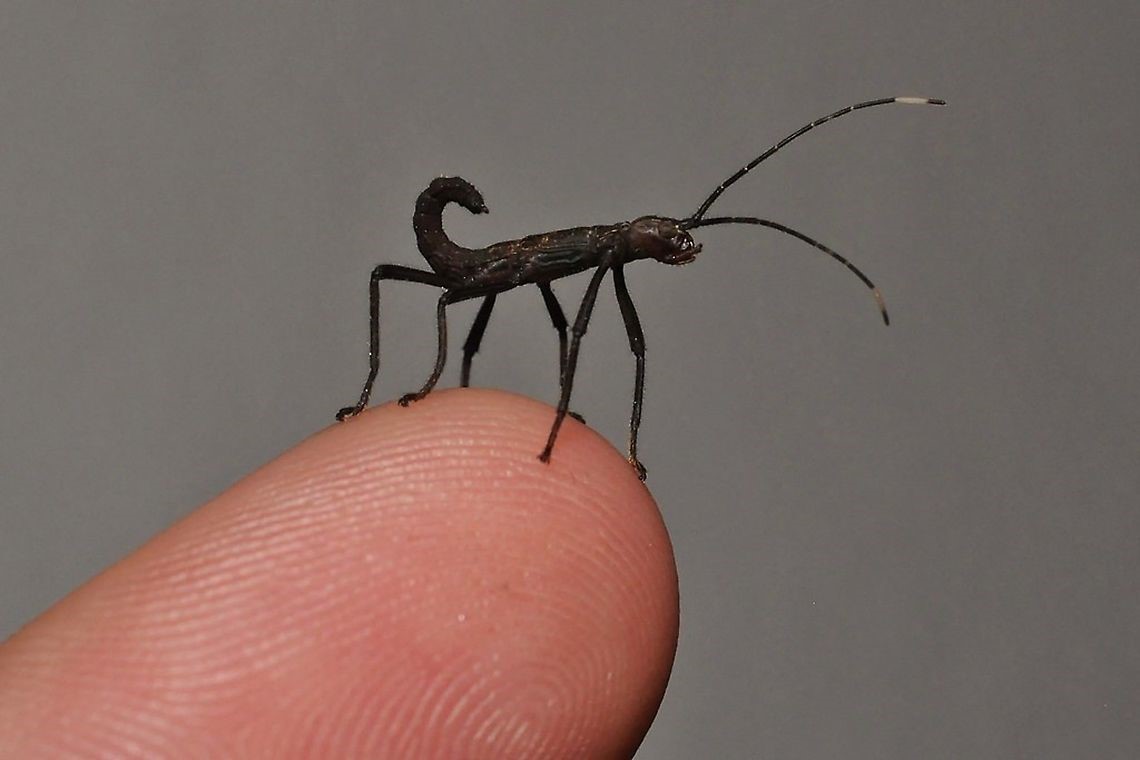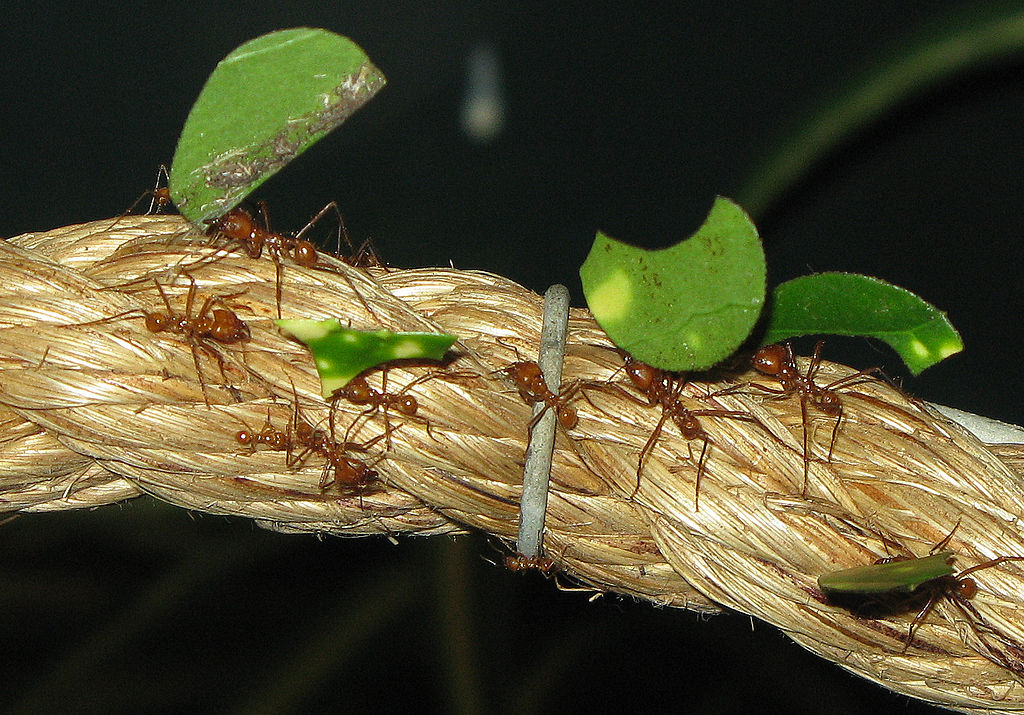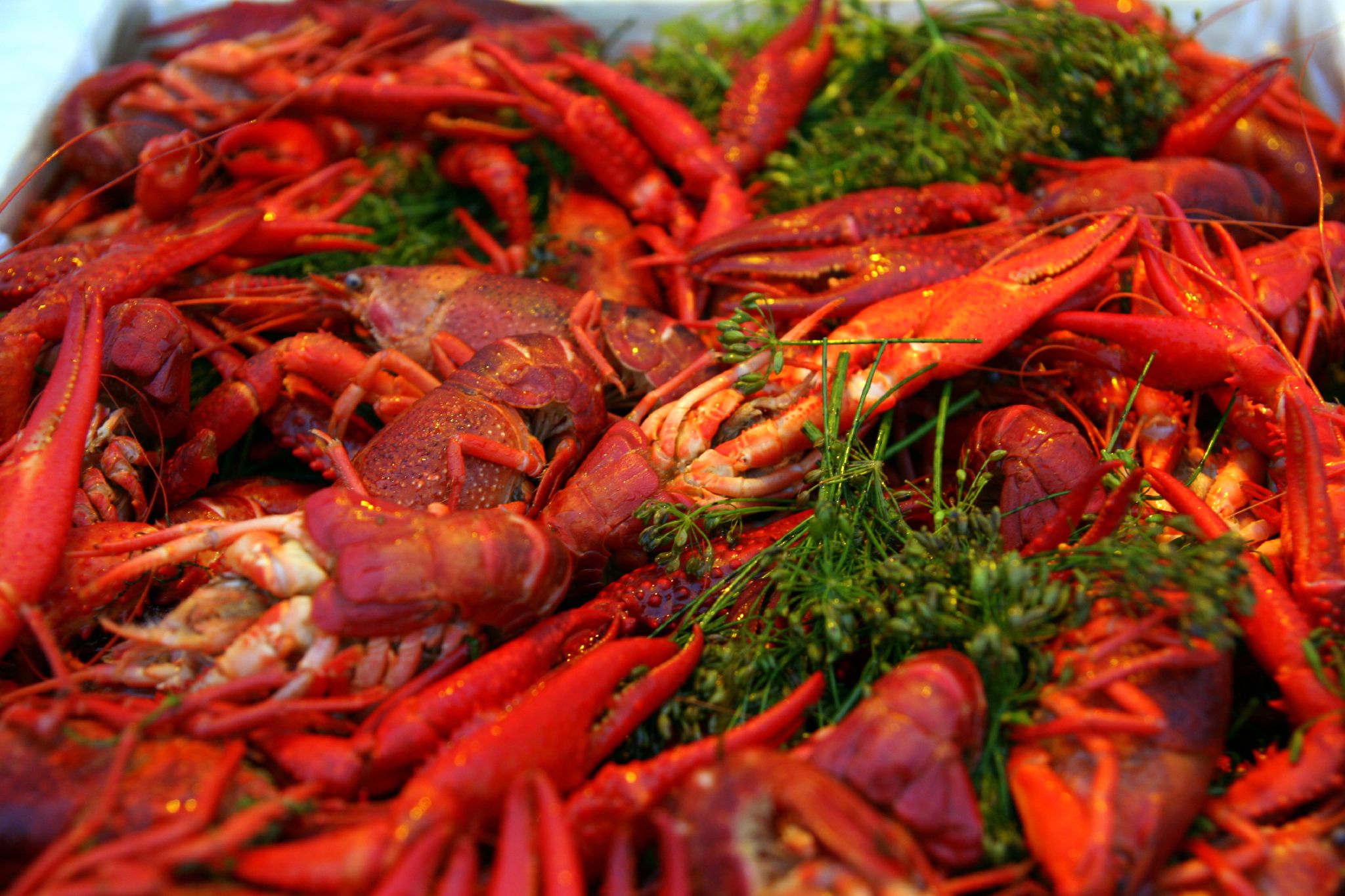Editor’s Note: The term “BioBlitz” was first coined in 1996 for intense attempts to record all the flora and fauna within a designated area. National Geographic, which has partnered with parks around the country for various BioBlitzes, describes them as “a 24-hour event in which teams of volunteer scientists, families, students, teachers, and other community members work together to find and identify as many species of plants, animals, microbes, fungi, and other organisms as possible within a designated area.” These quick and dirty surveys are used both to gather information about the biodiversity of a given area, and since members of the public and other non-experts (students, etc.) are often included as participants, as ways of sparking public interest in local flora and fauna.
 The “Eco-Tech” panel of the Memorial Park Conservancy recently recruited the Butterfly Center to conduct a preliminary survey or “mini-BioBlitz” of the insect fauna throughout Memorial Park, with the idea of inviting members of the public to help on future surveys. One of the goals of the panel is to get some baseline data on the biodiversity of all the creatures that live in Memorial Park, and from there, make plans on how best to preserve and manage or enhance this wildlife.
The “Eco-Tech” panel of the Memorial Park Conservancy recently recruited the Butterfly Center to conduct a preliminary survey or “mini-BioBlitz” of the insect fauna throughout Memorial Park, with the idea of inviting members of the public to help on future surveys. One of the goals of the panel is to get some baseline data on the biodiversity of all the creatures that live in Memorial Park, and from there, make plans on how best to preserve and manage or enhance this wildlife.
We were asked to survey several different natural habitats in Memorial Park (i.e., not the golf course). On a sunny morning in early July, Butterfly Center staff members, our summer intern, and a couple of volunteers drove out to Memorial Park armed with insect nets and containers. While some surveys (such as birds or trees) can be done without collecting, there are so many kinds of insects (and so few experts) that at least some specimens have to be collected in order to make identifications.
We decided to sample 10 transects — 100 feet long by about 8 feet wide — each one in a different area. Our first couple of sites were in open prairie vegetation, so we used sweep nets and aerial nets to collect samples. In case you are not versed in insect collection techniques, a “sweep net” is a canvas net bag on a sturdy metal frame that is swished through the vegetation. Periodically, the contents are emptied into Ziploc bags or other containers.

We found lots of these small millipedes (and a few slugs) in the leaf litter in the forested areas. (Photo by Zac Stayton)
Aerial nets are the more familiar “butterfly nets”: a much lighter, more delicate net bag that is swung through the air (it should NOT be dragged on the ground, used in water, or swiped through bushes!). These nets are more for catching fairly large, individual insects, especially ones that fly, so samples are put directly into a glassine envelope, or vial, or other appropriate container (or, if it is something readily identifiable, simply noted and released). Sweep nets generally collect things like grasshoppers and katydids, walkingsticks, mantids, leaf hoppers, stink bugs, the odd caterpillar, spiders, etc. Aerial nets are useful for larger flying insects such as butterflies, dragonflies and damselflies, wasps, bees, some beetles, certain flies, etc.
In the more forested areas, sweep nets were not really appropriate, so we used the aerial nets and also took litter samples (scraping up leaf litter and bagging it). Litter samples are typically brought back to the lab to process in a so-called Berlese funnel. Many small arthropods who live in the litter of the forest floor, including springtails and cockroaches, ants, small beetles, millipedes, etc., can be collected in this way.

A find in the leaf litter: a “woolly bear” caterpillar. This is the larval form of the giant leopard moth, Ecpantheria scribonia. The caterpillar rolls up in a ball, showing red stripes between segments covered with black “fur” (these caterpillars do not sting but probably taste bad so are warningly colored). (Photo by Nancy Greig)
There are many other collection techniques, none of which we used in this preliminary survey. Pitfall traps are always fun; they are empty cans or jars set into the ground with their mouths at ground level. Sometimes bait (a little raw chicken or fish, for example) is put in the bottom.
Crawling insects, especially those interested in odorous food, fall into the “pits” and cannot get out. Such traps need to be checked every couple of days — often they will contain different kinds of beetle, maybe a cockroach or two, etc.
Malaise traps are screen tents or baffles that trap small flying insects. The insects get caught in the folds of the screen and since they typically crawl upwards to escape, can be funneled into a container filled with alcohol.
Yellow pans are any wide, shallow container with a yellow (painted or otherwise) bottom. These are partly filled with water and a bit of liquid detergent. Wasps and pollinating flies, etc., are attracted to the yellow color and cannot escape once they fall into the soapy water. Yellow pans need to be used in open areas in sunny weather and the samples removed every day or two.
Our final survey site was along the banks of Buffalo Bayou, which was much higher than usual so there was not much shore. Here, we mostly used aerial nets. We saw several things in this area that were not seen other places, especially tiger beetles, damselflies, etc. Here, we mostly used aerial nets (or grabbed things with our hands).

The gorgeous Ebony Jewelwing, a common damselfly species along the banks of Buffalo Bayou in Memorial Park.

The vibrantly colored Vivid Dancer is a common damselfly species along the banks of Buffalo Bayou in Memorial Park.
By noon, it was blazing hot and we were all soaked in sweat, so we bagged things up and stopped at the Shandy Café (great little place on Memorial Drive) for lunch on our way back to the Museum.
Although we only collected for about three hours, we have our hands full in identifying everything. We first have to sort things to order, identify what we can, and then we will probably have to send some things off to experts in the various insect groups. I’m sure it will take us several weeks!
Some of the coolest things we found:
It’s always fun to open up the sweep net and find walkingsticks or praying mantids, or a colorful leafhopper. We picked up quite a few different grasshoppers and a few katydids. We noted but did not catch too many butterflies (we can identify most of these by sight, so no need to collect).
I like wasps and bees; we saw several of the large red Polistes wasps, carpenter bees, leaf cutter bees, and a really cool “digger” bee starting her nest tunnel in the sand (see attached video clip). A medium-sized beetle that looked like a wasp was visiting flowers in several places.
The very fast tiger beetles mostly eluded us down at the bayou’s edge, but we did catch a few damselflies there. The most common one there was the lovely Ebony Jewelwing.

Tiger beetles are extremely fast moving, long-legged, predatory beetles that often occur in open sandy areas, especially along streams. We saw many of these, probably Megacephala virginica – and managed to catch a few – along the bayou. (Photo from BugGuide.net by Chris Wirth)
Once we have compiled our results and reported them to the EcoTech Panel, they will then make plans for another survey sometime in the fall. I believe they intend to invite more general participation, so if you are interested in the insects of our area, keep your ears open!









